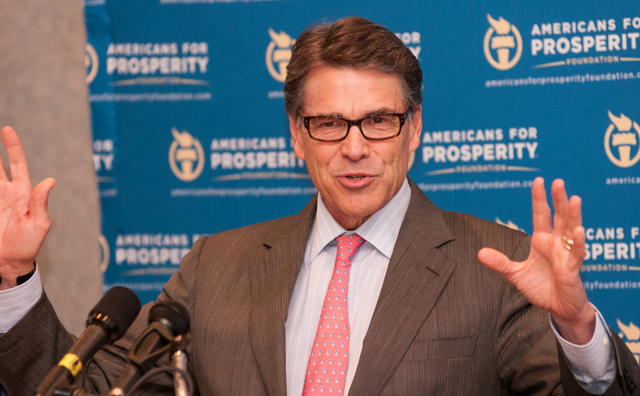On the request of Energy Secretary Rick Perry, the Department of Energy conducted a big study on grid resilience and reliability. You can flip through the 181-page PDF here, or you can breeze through these handy bullet points below, which include our own two cents per kWh. Choose wisely.
- Perry originally asserted that “baseload power is necessary to a well-functioning electric grid,” so a key question – and maybe the only question, in Perry’s mind with the initial request – was just how negatively renewable energy resources were impacting the grid’s reliability and resiliency. The final, final report was written in spots to couch some of the findings, but the resounding answer for those actually reading the findings was renewables “do not show a widespread relationship between VRE penetration and baseload retirements.” Perry’s assertion was proven false in this report.
- But plants are being retired, so what’s going on? The findings show that natural gas is a big reason. It became so cheap, so fast that it quickly moved to the top of the generation list and displaced other sources. As a result, any volatility in natural gas price or supply leads to big issues: “Low natural gas prices are driving greater use of natural gas for electricity generation, which has made exposure to natural gas price risk related to availability a growing concern.”
- The findings also support the goal of pushing a grid with “more flexible output rather than the steady output of traditional baseload power plants,” as well as investment in attributes that society as a whole values, such as jobs, community economic development, low emissions, local tax payments, resiliency and energy security. “Most of these benefits are not recognized or compensated by wholesale electricity markets, and this has given rise to a variety of state and private efforts that include … incentivizing VRE generation.”
- Again, the final report kind of undersells the fairly apparent conclusion here: The grid should be built to prioritize the incorporation of more renewable energy resources.
- Abigail Ross Hopper, president and CEO of the Solar Energy Industries Association (SEIA), put it like this:
“While we are still reviewing the specifics of this study, it’s been proven time and again that a diversified electricity mix is good for the overall system and poses no threat to the reliability of our nation’s grid. On the contrary, solar and other renewables provide significant cost savings, relieve pressure on our nation’s infrastructure and improve the grid’s overall performance.” - Graham Richard, CEO of Advanced Energy Economy said: “Our nation’s grid operators themselves have said they are facing no difficulty in managing an increasingly diverse set of resources, and that they will have no difficulty maintaining reliability as uncompetitive power plants inevitably retire. Distributed energy resources, energy storage, advanced grid technologies, demand response, and other advanced energy technologies are helping to make the electric power system more flexible, reliable, and resilient. When coal piles froze and coal plants failed in the Polar Vortex, it was wind power and demand response that kept the lights on. What is happening in our power grid is a natural process of technology progress and market competition. That process should be allowed to continue, not be distorted by this Administration’s preference for ‘baseload’ resources over the flexible resources that are modernizing the electric power system.
- In our opinion, the short coming of the DOE report is baked into its premise: What will be best to reliably improve upon what exists today, rather than more deeply questioning the inefficiencies of the status quo. I mean, if the top issue is that nonrenewable resources — while nice and cheap at various moments in time — fluctuate and mess with prices and reliability too much, maybe they shouldn’t be made a priority when considering what to do going forward in terms of reliability? I know, feels like a wild conclusion to jump to. Anyway, we agree with what the Rocky Mountain Institute believes was left out of the study’s final conclusions.
● Distributed energy resources can improve affordability, reliability, and resilience. The study summary suggests that states that retire baseload generators are “accepting increased risks that could affect the future affordability, reliability, and resilience of electricity delivery.” On the contrary, a growing body of evidence suggests that states and countries that replace old, costly fossil-fired generators with renewables, efficiency, demand response, and other distributed energy resources (DERs) have found that the opposite is true: that these resources can provide the same or better services at lower costs.
● “Fuel assurance” is not a proxy for resilience. The summary of the DOE study suggests that “fuel assurance” – i.e. the presence of a local stockpile of fuel on-site at a generator – should be valued. In fact, “fuel assurance” is by no means assured for fossil-fuel fired power plants, which face many risks beyond on-site fuel availability that can and do affect their ability to provide power to the grid.
● Grid infrastructure can be distributed. The summary recommends that Federal and state agencies accelerate “licensing, relicensing, and permitting of grid infrastructure such as nuclear, hydro, coal, and advanced generation technologies.” This reflects a 20th Century view of the definition of “grid infrastructure.” Today, the most reliable, resilient, and cost-effective “infrastructure” investment opportunities can be found behind the meter, in brownfield suburban lots, in your basement, or sprouting from the Great Plains. Reinforcing a dated definition of “infrastructure” leaves out the opportunities offered by these resources.
— Solar Builder magazine


Leave a Reply
You must be logged in to post a comment.